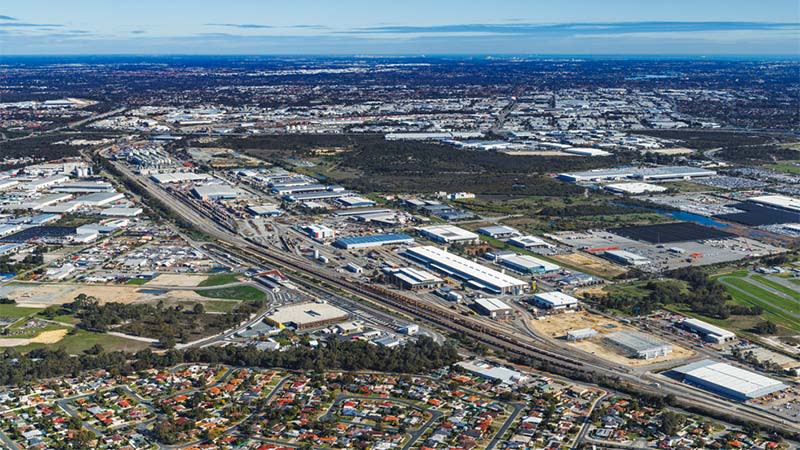
NOMINATIONS CLOSE SEPTEMBER 12 RECOGNISING THE INDIVIDUALS BEHIND THE PROJECTS
NOMINATIONS CLOSING SEPTEMBER 12 URBAN LEADER AWARDS
Resources
Newsletter
Stay up to date and with the latest news, projects, deals and features.
Subscribe
Perth is defying national industrial market trends, setting record low vacancy rates as east coast markets struggle.
According to JLL’s first-quarter 2025 national industrial vacancy analysis, Perth is Australia’s strongest industrial property market with a vacancy rate of 2.65 per cent.
The analysis, which included the Western Australian capital for the first time, reveals Perth’s strong performance compared with east coast markets, where vacancy rates increased to 3.9 per cent from 3.7 per cent in the previous quarter.
Total vacant space across the eastern states increased by 122,770sq m to 2.58 million square metres.
Perth has 7.5 million square metres of industrial stock, 90 per cent of which is concentrated in the East and South precincts.
Perth’s largest industrial area—the East precinct—is “extremely tight” with just 1.5 per cent of total stock available for lease.
That precinct includes established industrial areas Belmont, Kewdale, Welshpool and surrounding suburbs, according to Perth commercial real estate data.
The South precinct, which includes areas such as the Western Trade Coast, Canning Vale and Forrestdale, recorded the highest vacancy within Perth at 4.12 per cent, although this remains relatively low compared with many east coast markets.
The North precinct, taking in suburbs such as Malaga, Osborne Park and surrounding areas, had a 0.99 per cent vacancy, despite being smaller and having typically lower demand than other Perth industrial precincts.
Perth’s measured development pipeline totals about 164,800sq m under construction across the metropolitan area, with solid pre-commitment levels indicating strategic expansion in response to genuine demand rather than speculative oversupply.
JLL head of logistics and industrial, WA, Matt Brunsdon said “Perth’s industrial market demonstrates remarkable resilience and strength compared to the east coast markets”.

Sydney’s industrial market recorded a 4.4 per cent vacancy rate in the first quarter, with its Outer North West precinct the state’s tightest precinct at 1.91 per cent vacancy despite a slight increase from the previous quarter.
The city has the highest sublease vacancy nationally at 1 per cent, though this decreased by 32,000sq m over the quarter as some sublease space was absorbed.
Melbourne continued as Australia’s largest industrial market with 30.1 million sq m but experienced a vacancy rate increase to 3.5 per cent.
Melbourne’s South East precinct was the tightest industrial market on the eastern seaboard at 1.87 per cent vacancy, JLL said, while its North precinct recorded the highest vacancy rate nationally at 6.23 per cent
Brisbane showed resilience as the only east coast market to decrease vacancy over the quarter, falling marginally to 3.87 per cent.
The Queensland capital experienced a 10 per cent decrease in available sublease space to a very low rate of 0.24 per cent, indicating improving market fundamentals, according to the report.
“Perth’s development pipeline is measured and strategic,” Brunsdon said.
“With approximately 164,800sq m under construction across the metro area and solid pre-commitment levels, we’re seeing a market that’s expanding carefully in response to genuine demand rather than speculative oversupply.”
JLL head of strategic research Annabel McFarlane said the group “anticipated stabilising vacancy across east coast markets as supply delivery moderates through 2025”.
“Perth’s inclusion in our national analysis provides valuable new perspective on Australia’s industrial market dynamics, highlighting significant regional differences that investors and occupiers should consider in their strategic planning.”